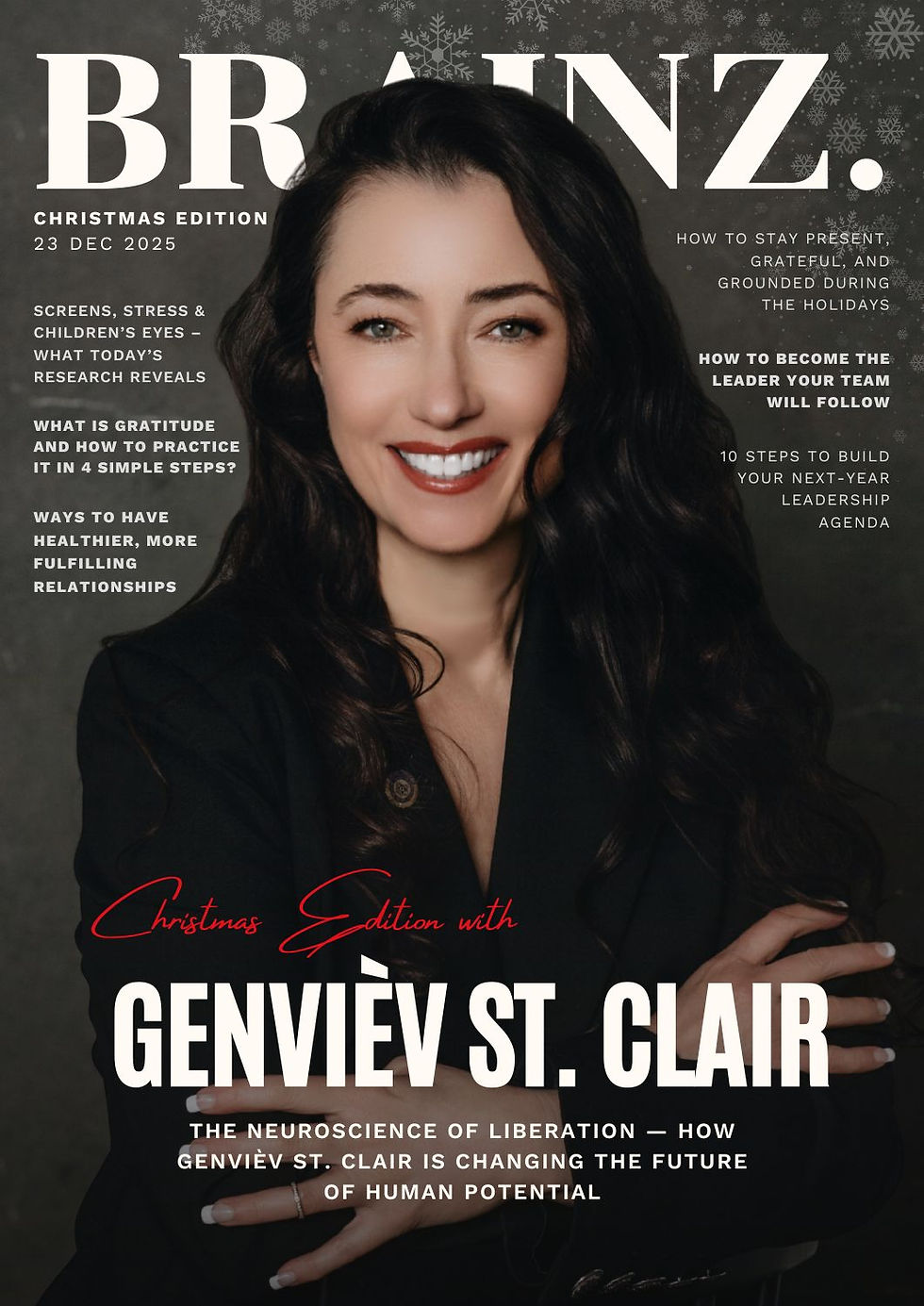The Biggest Reason You Break Your New Year’s Resolutions
- Brainz Magazine

- Feb 1, 2023
- 5 min read
Written by: George Thorman, Executive Contributor
Executive Contributors at Brainz Magazine are handpicked and invited to contribute because of their knowledge and valuable insight within their area of expertise.

According to the latest study, 32 days is all is takes for the average American to give up on their New Year’s Resolutions. That’s February 1st. A whopping 68% of people report giving up even sooner than that. The top two reasons people cited for giving up on their resolutions were lack of discipline and busy schedules. I think the reason behind those reasons is the subconscious mind.

The conscious mind is the rational, logical part of our brain that makes decisions based on facts and evidence. It’s the part making the resolutions to do things like get in better shape, improve relationships, or grow a career. The subconscious mind is the emotional, intuitive part of our brain that is influenced by past experiences, emotions, and beliefs. It’s the part that tells you that you don’t have the discipline to stick to a diet, or that it’s unsafe to let people close to you, or that you’ll never be able to get out of debt. This is what leads to self-sabotaging behaviors like blowing off your diet, skipping your workout, avoiding intimacy, procrastination, a shopping binge, or other undesirable behaviors that prevent you from achieving your dreams.
If your conscious mind is setting these goals, why are you doing the opposite? How can the subconscious mind overpower the conscious mind? The conscious mind stores little information and has a limited capacity for processing information. The subconscious mind stores a ton of information and is the fastest information processor known to man. If you think of your subconscious mind as an elephant, then the conscious mind is the rider. The rider can try to direct the elephant, but if the elephant doesn’t want to go that way, the rider will find themselves at a standstill. The subconscious mind’s number one job is to protect you and keep you safe. It can be resistant to change or the unknown. If your subconscious mind thinks that it needs to keep you safe from losing weight, making more money, or love, then you will have a heck of a time creating those things in your life.
Where do these limiting subconscious beliefs come from? Subconscious beliefs come from a variety of sources. Early childhood experiences can be particularly powerful and long lasting. Children are highly impressionable and tend to internalize messages from the adults in their lives. Traumatic experiences such as abuse, neglect, a major accident or illness can lead to the formation of negative beliefs. Childhood trauma is especially difficult for the brain to process and can lead to a lot of negative outcomes in adulthood. Negative self-talk and negative reinforcement are usually symptoms of adverse childhood experiences, but they can contribute to negative subconscious beliefs as well. Telling yourself over and over again that you can’t do it, you aren’t good enough, no one will ever love you, or you’re too this or too that will eventually create subconscious beliefs.
Societal beliefs and stereotypes can also be negatively internalized. A study found that if young girls were reminded of their gender before taking a math test, their scores dropped by noticeable margins. They had internalized the idea that boys are better at math. Even though these girls were top math students, being reminded of the stereotype effected the outcome of their tests. We also see higher levels of self-hate, depression, and anxiety among marginalized communities (POC, LGBTQIA, and immigrants) due to the internalization of negative stereotypes and hate speech.
What can you do to reconcile the conflict between the conscious and subconscious minds? Try one or all of these:
1. Affirmations
Affirmations are positive statements that we repeat to ourselves, either out loud or in our minds. It’s important to use present tense and make them positive, i.e., “I am confident and capable.” Choose your affirmation and use it at least 100 times per day. Say it to yourself in the mirror if you can. If you say your affirmation 10 times whenever you are in front of a mirror, it’s easy to get to 100 times per day.
2. Visualization
There are a lot of studies that show the power of visualization. It’s the act of creating mental images of the things you want to achieve. Seeing yourself as you hope to be can help shift your subconscious mind about what’s possible for you. Practice this for 3-5 minutes daily.
3. Reframing:
This technique helps to change the way you look at a situation by seeing it from a different perspective. I often refer to this as relentless optimism. Look for the good in each situation. Lost your job? Just an opportunity to find a better fit. Struggling with your weight? What a great opportunity to create healthy habits and master self-care.
4. Journaling
Writing down your thoughts and feelings can help you to become more aware of your subconscious beliefs and how they impact your thoughts and behavior. It’s a powerful tool for self-reflection and change. Try reframing while journaling!
5. Mindfulness
The practice of being present at the moment and observing your thoughts and feelings without judgment. By becoming more aware of your thoughts and feelings, you can begin to identify and challenge negative beliefs and replace them with positive ones. Use affirmations and reframing!
6. NLP
Neuro-Linguistic Programming is a method of communication and personal development that helps reprogram the subconscious through reframing, anchoring, and pattern interruption.
7. Hypnosis
During a state of deep relaxation in which the mind is more open to suggestion, a therapist can help to uncover and reprogram subconscious beliefs and thoughts.
8. EFT
Emotional Freedom Technique was developed by Gary Craig in the 1990s and is also known as tapping. It involves uses fingertips to tap on certain acupressure points while focusing on a specific issue or emotion. You can do this for yourself in under one minute and I teach you how here.
9. Thetahealing
Another gem that came out of the 1990s, Vianna Stibal’s powerful method teaches you how to go into a Theta brainwave (our primary wave in childhood and during REM sleep) to create awareness of subconscious blocks and change them. It combines meditation with NLP, visualization, affirmation, and reframing.
10. Therapy
Especially if you’ve experienced trauma, working with a therapist or counselor can be a highly effective way to identify and understand the underlying causes of negative subconscious beliefs and develop new, healthier ways of thinking and behaving.
No matter which of these techniques you choose, changing the subconscious mind is not a one-time event. It’s a continuous process. It takes time, and it’s okay to have setbacks along the way. It’s a journey, not a destination. Be kind and gentle with yourself and stay consistent with your efforts. Today is the day that most people quit. But you are not like most people. Today is the day that you begin making 2023 your best year yet. I believe in you.

George Thorman, Executive Contributor Brainz Magazine
Have you ever met a woman named George before? No? Then George Thorman has already changed your life. Helping people change their lives wasn't what she set out to do, but after EFT (Emotional Freedom Technique) helped her heal severe PTSD she knew she wanted to use it to help others. Since 2011 George has been facilitating personal development through her work as a Thetahealing Master, EFT Practitioner, and Optimize Coach. George's mission is to help people become the best version of themselves. Though she has called many cities and countries home over the years, these days you'll find her in Kansas City, Missouri, USA with her husband, son, and pets.










.jpg)